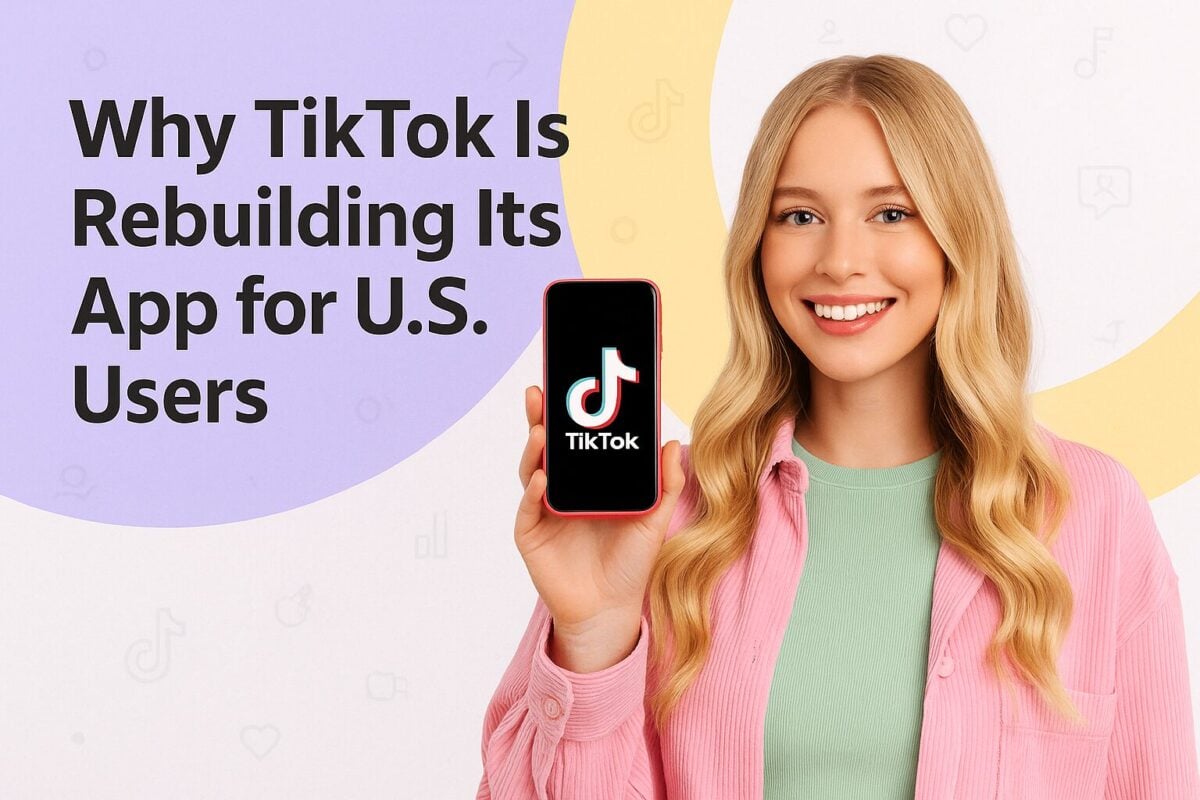Want to know what it takes to create your best online course landing page? Is it a powerful headline, bullet points, or video? What about testimonials, calls to action, and frequently asked questions? In this blog post, you'll learn about all the important elements that go into creating a powerful online course landing page. We’ll cover these and many more critical components to help you position your course attractively.
But first, we need to explore the most important aspect of marketing and sales. We need to learn about your ideal customer.
How To Create The Best Online Course Landing Page:
- Know What Drives Your Ideal Customer
- What the Best Online Course Landing Pages Have
- Sell a Big Idea in Your Headline
- Support Your Headline With a Practical Promise
- Go for the Quick Sale with a Call to Action
- Leverage Video
- Address Pain Points and Empathize
- Show What’s on Offer
- Use Images
- Leverage Social Proof
- Introduce Pricing
- Remove Fear, Uncertainty, and Doubt
- Your Bio
Know What Drives Your Ideal Customer
The concept of creating a persona is synonymous with sales and marketing today. In fact, you'll be hard-pressed to find any content on the topic of marketing or selling without coming across mention of how important it is to know who your product is for. Creating your best online course landing pages is no different. You are selling a collection of ideas to a very specific kind of customer after all.
Despite how common the idea of creating a personas is, they can be slightly overwhelming. There are tons of different templates available online and ideas surrounding what you must know and questions to ask. If you’ve experienced this kind of confusion, you're not alone. The great news is that creating your customer persona doesn't need to be complex or frustrating.
The simplest way to understand what moves your customer is to think in basic terms. Here are five simple questions to answer which will open up your mind and bring you closer to understanding who your customer is:
- What problems do they face in relation to your online course?
- What information do they need to solve their problems?
- What tactics will help them generate results?
- What steps must they follow to overcome the problems?
- What kind of information must they be exposed to about your program to convince them to want to commit to your online course?
It really is this simple. Sure, we can talk about demographics at length, we can get even more scientific and start unpacking specific values and misconceptions your ideal customer may have, but if you focus on just the basics, you'll have enough to develop an effective persona.
Use Primary Research
With these five questions in hand, finding the answers should be considered as easy as you sitting back and thinking about what you imagine your ideal customer would say. Don’t do that.
You must get out there and get answers from people you plan to create your course for. Primary research is crucial and will set you apart from your competitors. With firsthand knowledge, you'll be able to create more compelling copy and messaging then you would by guessing what it would take to convince your audience to buy your course.
What the Best Online Course Landing Pages Have
With a handle on who your ideal customer is, let's dig into key elements that all effective landing pages have.
Sell a Big Idea in Your Headline
Selling a big idea is all about selling a positive outcome. Big ideas are big because they force readers to explore a new reality, one that is exciting, positive, and filled with possibility. How do you identify your big idea? There are two ways.
First, use your persona document. Once you understand who your ideal customer is, you have deeper insights into where they currently are in life. And this is important. By understanding what problems, frustrations, and challenges your ideal customer experiences and a daily basis in relation to your online course, you have a clear framework to use when empathizing through persuasive copy.
Second, use before and after states. Your persona will identify your ideal customer’s current state. Often, anyone looking into learning something new has identified a lack of knowledge or the need to grow in some way. An after state is a look to the future and a better life. To identify an after state, think about the ideal outcome of having completed the course. The ideal customer outcome could be getting a new job, losing weight, or being able to play the guitar.
Whatever that after state is, identify and use it to create your big idea. Joanna Wiebe’s big idea is that you can learn how to turn words into revenue for your business.
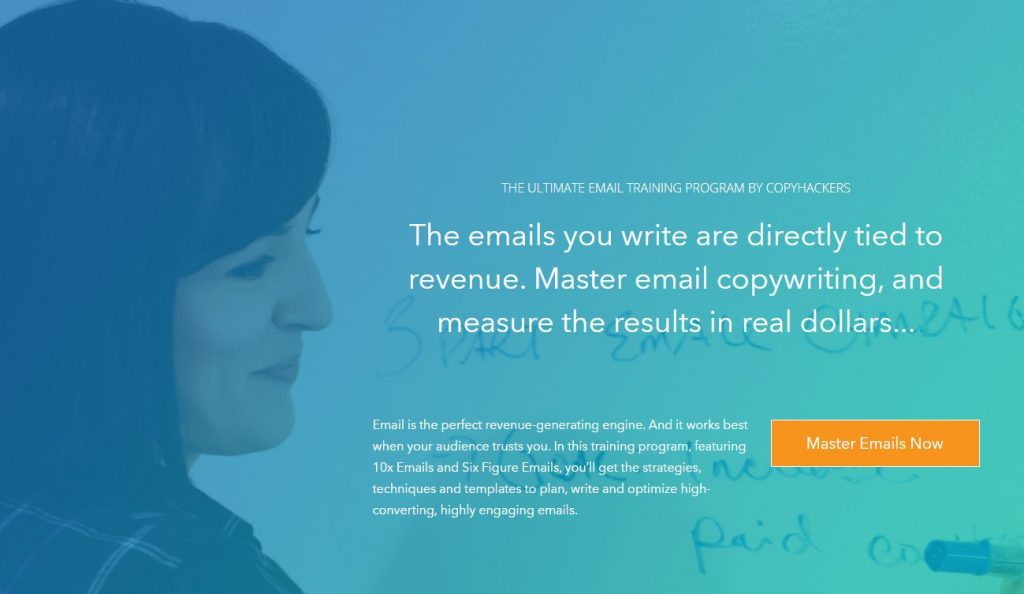
Source: copyhackers.com
Support Your Headline With a Practical Promise
Every powerful online course headline must be supported by a practical promise. Practical promises help demystify big ideas that seem out of reach. If you don’t include one, you’ll start to see your online course landing page bounce rate increase as more people avoid what appears to be a snake oil sales pitch.
Caleb Wojcik’s big idea of learning how to use Final Cut Pro X is straightforward. His practical promise is that you’ll be able to spend less time editing and more time growing your business. If you’re a videographer, you understand that editing can be a painful process if you don’t know how to use your editing tool. But that’s not all, Wojcik offers more by further demystify how you’ll spend less time editing and more time growing your videography business with the use of bullets.
Go for the Quick Sale with a Call to Action
To convert as many landing page visitors into paying customers, you can have to ask for their business. The great thing about effective online course landing page design is that you have the opportunity to land a quick sale. By strategically placing call to action buttons, you can close ready-to-buy customers.
Where should you place your buy buttons? Try and squeeze three into your landing page. Add one in the header, just below your practical promise, another after the breakdown of your course, and one after your pricing.
Leverage Video
Video is one of the most powerful tools you can use to get your message across. Today, more people turn to video for information, some even purchase after seeing videos about products or services. You can use video as a way of introducing yourself, your course, and most importantly as a tool for building a desire for your offer.
Take Pat Flynn's Power-Up Podcasting video. In it, he makes the case for why podcasting is essential today, shares details about his course, and includes video testimonials from satisfied students.

Source: smartpassiveincome.com
Address Pain Points and Empathize
There's no getting around the need to build a case for purchasing your course. To do that, you'll need to identify specific pain points that your ideal customer experiences. But simply identifying pain points isn't enough. You have to paint a picture where not addressing your ideal customer’s current state could lead to a less than desirable future.
Once you’ve identified the customer's pain point, empathize. Empathy levels the playing field and creates a space where your ideal customer is now able to look to a positive future. It acts as a release mechanism and warms your prospect up to the idea of correcting or improving their situation.
Greg Todd identifies pain points in his video. He touches on COVID-19 and how it has created a different world. He then explains that this is the best time to create a new path that will help healthcare workers thrive in this new reality.
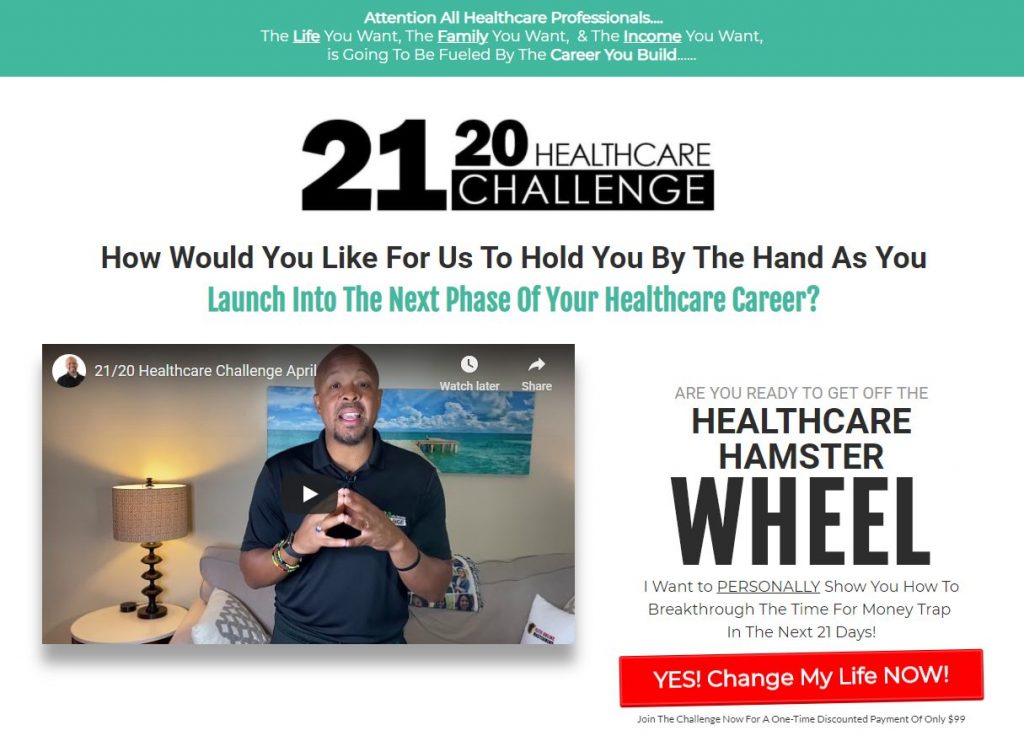
Source: gregtoddtv.com
Show What’s on Offer
Detail is essential. Prospective students about to pull the trigger want to know exactly what they're getting, how it will be made available, and what the benefits of your offer are. Benefits are often misunderstood yet a highly important aspect of persuasive copy. When used correctly, they position your course as a truly valuable asset. To use benefits to your advantage, it's best to list them using bullets.
Bullets are synonymous with valuable information. When it comes to reading content online, they're easy to make out and pay attention to. To create your most effective bullets, think about the benefits of your online course as building blocks, creating one for each valuable nugget of knowledge your learner will receive and associate it with positive result learners experience.
Pat Flynn’s shows what’s in his affiliate marketing course using bullets and by clearly stating what value learners receive from each idea.

Source: courses.smartpassiveincome.com
Use Images
Images are a tricky subject when it comes to online content. Often, stock photography is used everywhere. We've all seen certain free stock images floating about on various websites more than once, devaluing what should be great content. Don't do this to your online course landing page.
First prize should be to take your own images of your course and content. These are going to look original and for more valuable than stock photos. They will help your audience perceive a closer approximation to what would be like to experience your online course. If you absolutely cannot take your own images, invest in premium stock photos. But make sure you get the best, and that they are closely aligned and relevant to your course material and audience.

Source: calebwojcikfilms.com
Leverage Social Proof
Social proof is the quintessential element for all sales copy. Creating a high converting online course landing page requires that you have powerful testimonials as proof that your course delivers the goods. Add at least three text or two powerful video testimonials that highlight various aspects of your online course. This way, readers get to appreciate various facets of your material through the words of people just like them. Caleb Wojcik uses video testimonials, a smart way to prove that his course is effective.
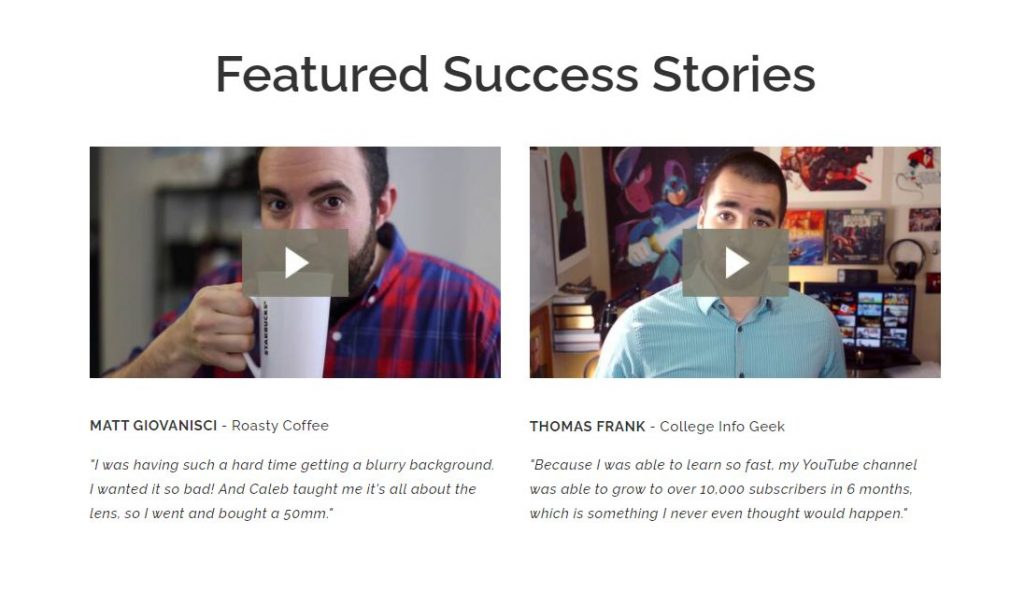
Source: calebwojcikfilms.com
Introduce Pricing
You can't sell a product without pricing. As you offer your course, be smart about the way you position your pricing. Effective online course landing pages don't just list a price, the attached value. Along with each price include copy snippets that show what your customer is going to receive. This way, they'll perceive your price as affordable and your course worth the investment.
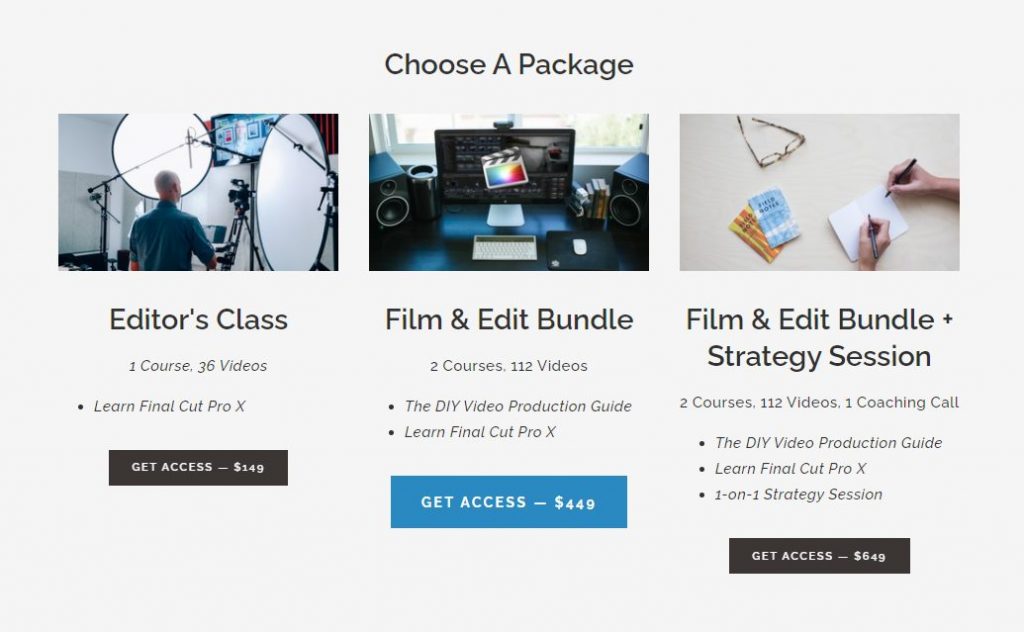
Source: calebwojcikfilms.com
Remove Fear, Uncertainty, and Doubt
Making a purchase isn’t always the easiest thing to do. Doubts about a product often creep up, making it harder to commit financially. Removing fear, uncertainty, and doubt is likely one of the more critical components of creating a high converting online course landing page. To do so, you need to know what would prevent your customer from making a purchase. The great news is you've done the legwork by performing primary research. Use your persona to identify the most important ideas that drive your ideal customer to commit to a course like yours.
Use this information but change it up a little. Turn the feedback received in the creation of your persona into a series of frequently asked questions. If you're not sure what these questions look like, here's a collection that often crops up in the minds of prospective students:
- Who is this course for?
- What do I get out of this course?
- Can I get a refund?
- Will I get support?
As you can tell, these are generic questions. This is why using primary research is so crucial.
In the example below, Caleb Wojcik shows that he knows what his buyers want out of an online course on video editing. His FAQs are highly specific and well-answered.

Source: calebwojcikfilms.com
Offer a Money-back Guarantee
Offering a money-back guarantee may seem like a scary or unnecessary risk, but it's worth it. Putting a money-back guarantee on the table tells your audience that you're making a smart purchasing decision, one backed by the option of zero risk. Money-back guarantees have to include some information on how to qualify for a money-back guarantee. But don't make learners jump through hoops.
Instead, make it as simple as possible. If they are not satisfied with what's available, all they need do is email support and get a refund within a certain amount of days. Assigning a cut-off for refunds is important. While not every customer is going to be a tire kicker, they do exist. And because you're also running a business, dishing out refunds to everyone at any point in time after purchase won't help you get to your revenue goals.
Your Bio
Bios matter. They show learners who they are learning from, and more importantly, why you’re especially qualified to teach. Make yours brief and focus on the points that relate to the knowledge that will be covered in your course.
Take Caleb Wojcik’s bio. It includes an image of him along with a brief look at his career and experience.

Source: calebwojcikfilms.com
Put if all Together
With all of these elements your online course landing page will be powerful. The last step is to put them in order. Go through each section and create the necessary elements, paying attention to detail.
Create Your Winning Landing Page
Creating the best version of your online course landing page includes many elements. Now that you know exactly what those are, dig deep into the groundwork before jumping at them. Get to know exactly who your ideal customer is, what their problems, challenges, and desires are, and what they want out of a course like yours. If you get this right, you'll be able to create a high-converting course landing page.




